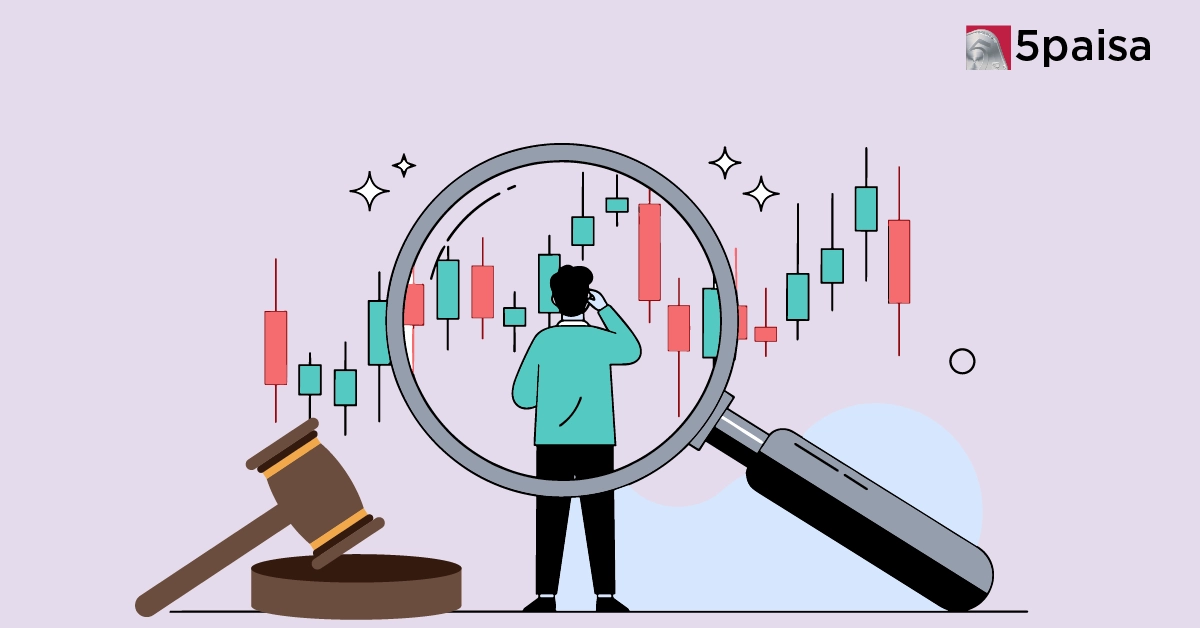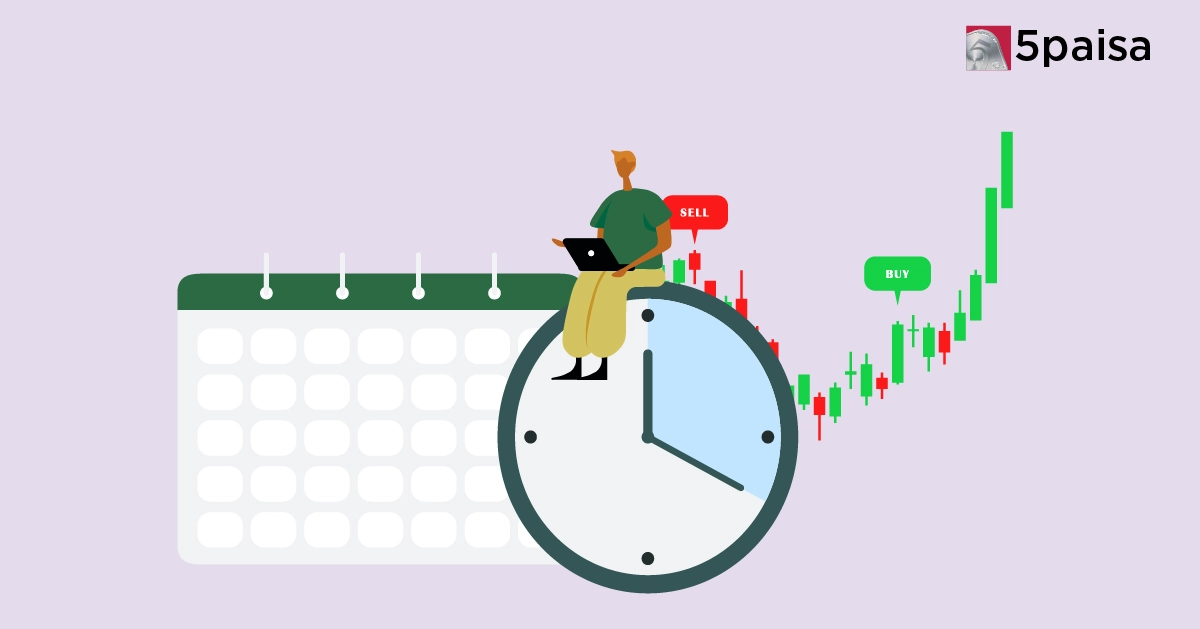How Are Unlisted Companies Valued? Common Approaches and Methods
What to Do When Your Portfolio Is in the Red? A Rational Look at Market Downturns

Last Updated: 15th May 2025 - 01:00 pm
April 2025 delivered another jolt to investors across the globe. In the U.S., markets reacted swiftly to a fresh round of tariffs and persistent inflation data, sending the S&P 500 on a sharp decline. The Cboe Volatility Index (VIX) surged, signaling heightened investor anxiety. Meanwhile, Indian markets weren’t spared either. The Nifty 50 dropped over 12% within a couple of months, leaving portfolios bruised and nerves frayed.
A recent J.D. Power survey found that 56% of U.S. investors say this is the most stressful market environment they've ever experienced—especially true for Gen Z, many of whom are facing their first real downturn.
When your portfolio is deep in the red, panic is a natural first response. But reacting emotionally during downturns often leads to irreversible mistakes. Instead, here’s a rational, well-rounded strategy to help you navigate through the noise and come out stronger on the other side.
1. Pause, Breathe, and Zoom Out
- Watching your hard-earned investments shrink can be unsettling. But perspective is your best friend in times like these.
- Historically, markets go through frequent 10–20% pullbacks, even in years that ultimately end with gains. For instance, during March 2020, the S&P 500 lost over 30% in mere weeks—yet by the end of the year, it had fully recovered and even posted fresh highs. Those who exited missed one of the fastest recoveries in history.
Take a breath. Before making any moves, revisit your long-term goals. Unless you urgently need the funds, remember: a loss is only realised when you sell.
2. Understand the “Why” Behind the Fall
- Not all red numbers mean disaster.
- Sometimes the market falls due to macroeconomic reasons—rising interest rates, inflation fears, geopolitical tensions. Other times, sector-specific challenges take center stage.
- Consider Claire, a UK-based investor heavily exposed to growth-focused funds like Pacific Horizon and Edinburgh Worldwide. Between late 2023 and early 2025, her investments lost 32% and 48%, respectively. It looked devastating—until her financial advisor explained that the decline was largely driven by rising interest rates impacting growth stocks. The businesses themselves were still sound.
Key takeaway: Assess whether the drop is temporary or indicates a deeper issue. If the fundamentals of the companies are intact, this might be an opportunity—not a setback.
3. Review Your Diversification Strategy
When portfolios crash hard, it often reveals concentration risks you didn’t notice earlier. Were you too reliant on one sector—like tech—or one region? True diversification spreads risk across equities, debt, gold, real estate, and even geographies.
For instance, while U.S. stocks swung wildly this year, gold held steady, offering balance for those who diversified properly.
- Think beyond stocks. Consider adding:
- Dividend-paying companies for steady cash flow
- REITs for real estate exposure
- Shorter-duration bonds to weather rising interest rates
- The goal isn’t to avoid risk—but to spread it intelligently.
4. Stay Invested—Even When It Feels Wrong
-
One of the smartest strategies during a downturn? Keep investing.
- This is where Systematic Investment Plans (SIP) shine. By investing a fixed amount at regular intervals, SIPs ensure you buy more units when markets fall and fewer when they rise—automatically applying the rupee-cost averaging principle.
- Investors who stuck with SIPs during the 2008 crash found themselves in much better shape within two years. The key is consistency.
- If your income and expenses are stable, consider maintaining—or even increasing—your SIPs. You're essentially buying quality assets at a discount.
5. Turn Losses into Tax Advantages
- If you have a taxable investment account, downturns offer a silver lining: tax-loss harvesting.
- This involves selling investments that are in the red to offset gains elsewhere—effectively reducing your capital gains tax. For example, if you sold a stock earlier this year for a ₹50,000 gain, selling a ₹50,000 loss could wipe out the tax burden.
- But beware of the “wash-sale” rule—you can’t buy back the same (or a substantially similar) investment within 30 days if you want to claim the loss.
- While this strategy doesn't apply to retirement accounts like PPF or EPF, it can offer significant relief in non-tax-advantaged accounts. Always check with a tax advisor before executing.
6. Rebalance Smartly, Not Emotionally
- When markets swing, your asset allocation shifts—sometimes dramatically. Rebalancing means adjusting your portfolio to restore your target mix (say, 60% equities, 40% debt).
- If stocks fall and bonds hold firm, your equity allocation might drop to 50%. Rebalancing would mean buying more stocks to return to 60%. It feels counterintuitive—but it’s how disciplined investors manage risk and “buy low.”
- Don’t rebalance impulsively. Stick to a schedule (quarterly or annually) or let an advisor guide the timing.
7. Emergency Funds: Your First Line of Defense
- One of the biggest investment mistakes? Selling assets at a loss just to pay your bills.
- That’s where your emergency fund comes in. Experts like Suze Orman recommend retirees keep 3–5 years of expenses in liquid, low-risk instruments. Younger individuals should aim for 3–6 months, depending on income stability.
- Having this cushion means you can ride out the downturn without dipping into long-term investments.
8. Get Professional Help When in Doubt
- If market volatility has you obsessively checking your portfolio, losing sleep, or panicking—it's okay to ask for help.
- As per J.D. Power, 40% of DIY investors are now open to hiring an advisor. Whether it’s a human advisor or an affordable robo-advisory platform, the right guidance can bring clarity and discipline to your decisions.
- A good advisor won’t just pick stocks—they’ll help you build a personalised plan, stay focused on your goals, and remind you when to tune out the noise.
Conclusion: Red Is Not the End
If your portfolio is bleeding, it doesn’t mean you’ve failed. It means you're invested—and all investors face downturns. What separates success from regret is your response.
Stay calm. Stay invested. Make thoughtful adjustments. The market is a long-term game, and discipline always outlasts fear.
Because history shows us again and again: investors who keep their cool when others panic, are the ones who win big in the end.
- Flat ₹20 Brokerage
- Next-gen Trading
- Advanced Charting
- Actionable Ideas
Trending on 5paisa
Indian Stock Market Related Articles
Disclaimer: Investment in securities market are subject to market risks, read all the related documents carefully before investing. For detailed disclaimer please Click here.

 5paisa Capital Ltd
5paisa Capital Ltd
 5paisa Capital Ltd
5paisa Capital Ltd



